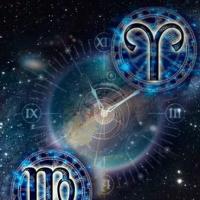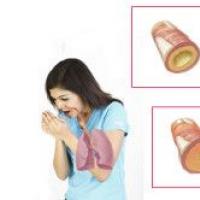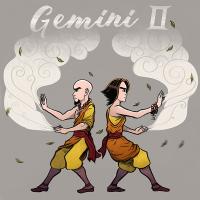Walks in the high intracranial vice. What to take for intracranial vice. Herbal infusions and brews
Intracranial vice, hypertensive-hydrocephalic syndrome thinly.
MOVEMENT Intracranial vice
(options - intracranial hypertension, hypertensive syndrome, hypertensive-hydrocephalic syndrome).
Povna "diagnostics of intracranial hypertension" is a defect of veterinary neurology. Luckily, such a “diagnosis” does not come close to the real problems of the patient. For those who formulate the diagnosis, the term may be more rare in times - with so-called. idiopathic (or benign) intracranial hypertension (frequency 1-2 per 100,000 population).
The movement of the intracranial vice is not a diagnosis, but a description of one of the lines of the development of the multiple small illnesses. Intracranial pressure (ICP) develops in case of hydrocephalus, swelling of the brain, neuroinfections (encephalitis, meningitis), important craniocerebral injuries, intracranial hemorrhage, and other rare ailments, etc.
Main signs of ICP advancement:
- headaches,
- nudota, vomitting or whirring (sound the pose with a sing-song with the tricks of їzhi, often lies),
- damage to the zor and ruhіv full-time apples(skewness),
- this is the name of the stagnant discs of the healthy nerves on the full-time day,
- Damaged svidomosti (in the form of stunned to Komi),
- in children of the first fate of life - the transcendental growth of the stake of the head (the normal value is lower), the vibrating tension of the neck, the expansion of the seams between the bones of the skull.
Possible judgement, with a trivial pathological process - rosacea, blindness, paralysis.
Need to remember, sho OKREMO dermal sign DO NOT CONFIRM rise of ICP.
Norms of head count for term babies:
Normie srostannya, vagi ta cola head for prematurity
Respect! As a child, an intracranial vice was effectively placed, and he needed a term hospitalization, because go about the threat of life!
Not signs of increased ICP:
- expanded ducts, interstitial space and other lines of the cerebrospinal fluid system on neurosonograms (NSG) and tomograms
- Sleep disorder and behavior
– hyperactivity, lack of respect, shkidly zvichki
- damage to the mental, mental and motor development, filthy success
- "Marmurovy" baby shkiri, including those on their heads
- nosebleeds
- "finger impression" on the x-ray of the skull
- tremor
- walking backwards
DIAGNOSTICS
Objectively assess the state of ICP can be less than an hour of surgery to open the skull or (less reliably) less than an hour of lumbar puncture. All other investigations should give indirect information, as the picture may be formed by the singer only for a competent interpretation by the doctor.
An increase in the cerebellum, subarachnoid space, interstitial space is often seen in healthy people and without clinical pictures nothing to talk about.
According to NSO (CT, MRI), the diagnosis is not made and the examination is not assigned.
The most accessible cob method of diagnostics for suspected ICP advancement is the examination of the fundus. Additional methods of investigation are recognized for clarifying the nature of brain injury.
Visualization methods (neurosonography, computer or magnetic resonance imaging) do not directly affect the severity of the disease, although they can help clarify the cause of the disease, evaluate the prognosis and suggest directly.
Echoencephaloscopy (EhoEC, or EchoEG - echoencephalography) “for the treatment of ICP” - the pardon has been expanded in the post-traditional space. It is fundamentally impossible to evaluate the pressure for help from ExoEC. This old-fashioned method is used only for swedish and very close to the point of large volumetric intracranial structures (swelling, hematomas and skinny). Data from ExoEC can be in good luck in the car 03 or in the primal care with the prescribed methods of first aid and the choice of the place of hospitalization.
It is not possible to evaluate ICP also with the help of electroencephalography (EEG), rheoencephalography (REG).
About every kind of varto guess the “diagnosis” according to Voll, Nakatani and similar charlatan methods - these procedures cannot be considered as diagnostics, and serve only for the selection of pennies.
JOY
Likuvannya stanіv, scho accompanying the rise of ICP, lie down due to the causes of guilt. So, in case of hydrocephalus, operations are performed, in some cases, too much liquor is injected from an empty skull, for the presence of swelling, it is removed, and in case of neuroinfections, antibiotics are introduced. Zastosovuetsya and more symptomatic medicinal treatment, straightening the decrease in ICP, protse call the timchasov world for acute situations.
Incorrectly, the practice of “likuvannya” was expanded, whether it was ailments with sechoginnim preparations (diakarb, triampur). Most of the cases have such an exuberance towards an indistinct diagnosis. For the presence of real indications, the examination may be carried out at the hospital under strict control. The exercise of "drug treatment of intracranial hypertension" can lead to the development of the cause of irreversible changes in the body (hydrocephalus, blindness, intellectual impairment). On the other hand, the exaltation of a healthy patient threatens with “less” side effects of stagnant drugs.
In confirmation of what has been said, one can quote the all-worldly in the house of Child Neurology (J.Menkes, H.Sarnat, 2005)
The reason for this discord is unknown. The victims have a lot of headaches, which are sometimes accompanied by boredom, blurred vision and noises in the head. Screen off the head, stick it in possible reasons lifted vice and lumbar puncture is victorious. Changing the vag, using diuretics to change the brain stem and periodic transverse punctures to reduce the intracranial pressure can help.
- Without the negative jubilation zir can be spent.
- Prote іnodi need operation.
Sound, medical treatment of hydrocephalus does not give an effect, because. in most cases, hydrocephalus is the result of a damaged liquor intake, and this process is practically not regulated by medicinal preparations. Most of the essential drugs that have been shown to reduce the production of liquor, such as acetazolamide and furosemide, are badly tolerated in effective dosing. Appointed drugs at different doses (100 mg / kg / dobu acetazolamide and 1 mg / kg / dobu furosemide) change the production of cerebrospinal fluid - acetazolamide for the treatment of carbonic anhydrase, furosemide for the treatment of chloride ion transport. Skin from these preparations, building a 50% reduction in the volume of liquor, the effect of their combination is great. Change in the production of liquor by 1/3 to reduce the intracranial pressure by less than 1.5 mm of the water column, which is between clinical zastosuvannya given likiv. On this day, the stench lingers like a timchasovy day before the operation.
Tim is not less, but 20 times more often among young women from the super-worldly vaga. The fact that everything more people suffers from obesity, illness is most common. The reason for the moving vice in the middle of the skull is unknown. However, deakі people are more skhilnі to tsgogo, to that scho great veins, like taking blood from the brain, less, lower sound. Sweat the blood drains more from the brain and, later, accumulates at the brain of the skull.
The movement of the vice is not the result of any other discord, such as plumpness, infection, blood clot, or blockage, as if it were a change to the normal exudation of the radii, which drains the brain. In most people, the development of idiopathic intracranial hypertension cannot be traced to any specific subtype. In children, they sometimes develop when they are taking corticosteroids, or when they take a large amount of vitamin A, or the antibiotic tetracycline.
– “judicial drugs” (cavinton, cinnarizine, sermion, nicotinic acid, etc.)
- “nootropic drugs” (nootropil, piracetam, pantogam, encephabol, pikamilon toshcho)
– homeopathy
– herbs
- vitamins
- massage
- acupuncture



